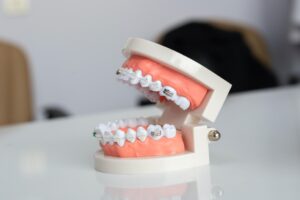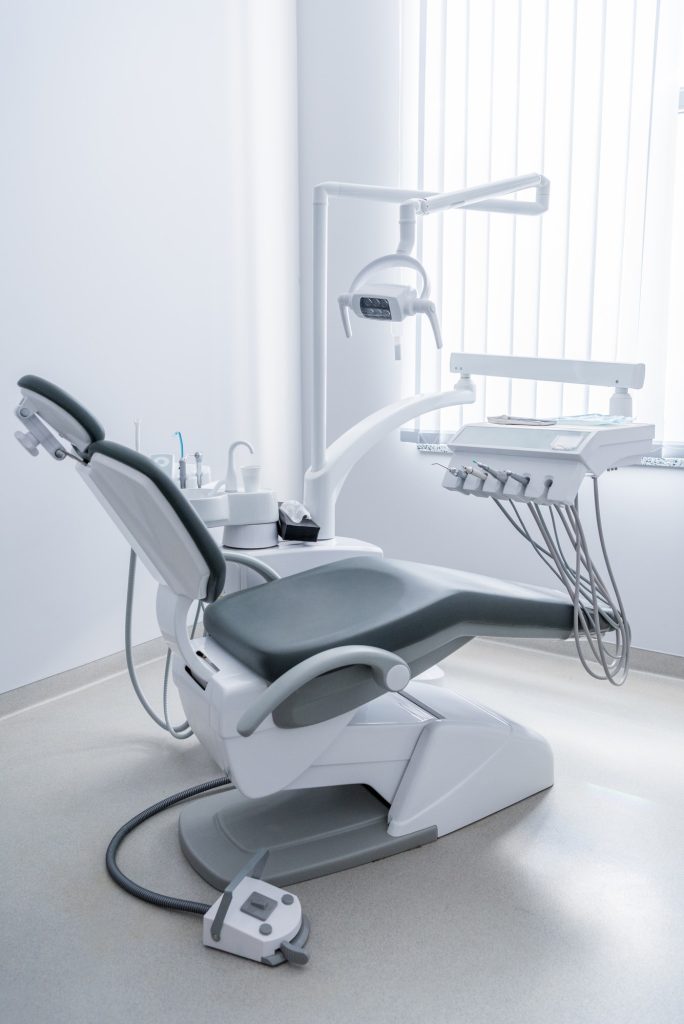Porcelain veneers are sleek, lightweight shells of porcelain that can be affixed directly to the front surface of teeth for a beautiful and seamless look. That is a popular cosmetic dentistry procedure that can help improve the look of your natural teeth. Before you decide to get veneers, you must understand the process and costs involved. Delving deeper, let’s examine what you need to know about porcelain veneer cost.
Ready to discover the wonders of Porcelain Veneers?
Unlock the beauty of your smile with Porcelain Veneers! These resilient and thin shells are adhered directly to the front part of your teeth, creating a stunning transformation. That is a popular cosmetic dentistry procedure that can help improve the look of your teeth by covering stains, chips, or other imperfections in your smile. They also can be used to close gaps between teeth or even change their shape or size.
Are you eager to uncover the mystery behind Porcelain Veneers?
Getting veneers typically takes two visits to the dentist’s office. At the first visit, your dentist will take an impression (mould) of your mouth and send it off to a dental laboratory, where they will create custom-made veneers just for you. During this time, your dentist may also apply temporary veneers while you wait for your permanent ones. At the second visit, your dentist will place the permanent veneer onto each tooth and make sure it fits properly and matches up with any existing restorations in your mouth before polishing them to give them a glossy sheen like natural teeth have.
How can Porcelain Veneers improve your smile and life?
Porcelain veneers provide excellent value for those looking for long-lasting cosmetic improvements for their smiles. Depending on your level of care, these restorations can last anywhere from seven to fifteen years!

Patients get plenty of value from them over time without worrying about replacing them often. Additionally, because they match up nicely with existing restorations and natural teeth, they provide an aesthetically pleasing look that many people find attractive in others’ smiles.
And finally, porcelain materials used in these restorations are designed not just for their strength but also for their ability to blend in with natural tooth enamel so that no one knows there is anything different about them!
What are the variables that determine porcelain veneer cost?
In Australia, porcelain veneers can begin at $700 per tooth – an affordable investment for a stunning smile. We’ll explore what factors affect the cost of porcelain veneers so that you can confidently make the best decision for your needs.
Type & Quality of Veneer Material Used
The type and quality of material used for your veneer will greatly impact the overall cost. The higher quality materials are more expensive, but they also offer greater durability and a more natural-looking finish than cheaper options. Generally speaking, porcelain veneers will last between 7-15 years before needing to be replaced, while composite resin veneers typically only last 3-5 years before replacement. That means that over the long term, higher-quality materials can actually save you money in terms of maintenance costs.
Number & Location of Veneers Needed
The number of teeth being treated and their position within the mouth are factors that influence the cost of veneers. Generally speaking, it will cost more to get a full set of veneers than it would cost to get just one or two individual ones. Additionally, due to their complexity, your dentist may charge more for treating certain areas in your mouth (e.g. molars).
Experience & Reputation of Your Dentist
Select a qualified and experienced dentist specialising in this type of work to attain the most favourable outcome from your porcelain veneer procedure. While these cosmetic dentists may charge slightly higher rates than others, their expertise ensures you get high-quality results that will last many years without additional maintenance costs.
Location
Finally, the geographical location where you get your porcelain veneer procedure done can also affect the cost. Prices for veneers tend to be higher in larger cities compared to smaller towns and rural areas due to supply and demand. Additionally, some states may have higher taxes or require additional coverage for dental procedures that will increase your costs further.
What kind of additional treatments may be necessary for the proper placement and installation of porcelain veneers?
To guarantee the best outcomes and ensure your porcelain veneers last for years, additional treatments may be necessary during their placement and installation process. That may involve reshaping your existing teeth to accommodate the veneers and gum contouring to create a more symmetrical and aesthetically pleasing smile.

Additionally, your dentist may recommend teeth whitening before placing the veneers to achieve a consistent and uniform shade.
Sometimes, temporary veneers also allow for a trial period and ensure perfect fit and comfort before final placement.
By carefully considering and executing these additional treatments, you can achieve stunning, natural-looking results that will last for years.
How to Prepare for the Cost of Dental Veneers
Considering how much dental veneers cost when looking into this type of procedure can be intimidating. Yet with a bit of planning and the right advice, you can ensure that your budget is prepared for this important investment in your health. If you’re looking for ways to afford dental veneers, then these budgeting tips are just the thing!
Do Your Research on Different Types of Veneers
There are several different types of veneers depending on your needs. Porcelain veneers are a more costly dental restoration option than composite resin. Before committing to any choice, carefully weigh each option’s possible advantages and drawbacks. If cost is a major factor, ask your dentist if any temporary solutions could be used until you figure out a more permanent solution.
Confirm Prices in Advance
Before undergoing a procedure, it is essential to budget accurately for the cost by consulting with your dentist about any associated expenses and potential discounts or payment plans available. By doing this, you can confidently prepare for the fee and save yourself from encountering any unexpected charges at checkout. Additionally, if you find out what payment options are available, you can start planning ahead so that you are prepared when it comes time to pay for the procedure.
Choosing a quality practitioner providing dental veneer treatments
When considering a dental treatment such as the application of veneer, one must take great care in selecting an experienced and reputable cosmetic dentist.
Not only will this improve the results provided, but veneers are also a monetarily significant investment; guaranteeing quality treatment should be top of mind.
Moreover, aesthetic services require a keen eye, which is best accomplished through rigorous training and experience – all features prudent in selecting a cosmetic dentist.
Consider inquiring about patient recommendations or conducting thorough research to help guide your decision to choose the right dental practitioner!
How do porcelain veneers set themselves apart from other treatments?
By understanding the differences between these treatments, you can decide on the best way to achieve your desired results.
Porcelain Veneers vs Dental Bonding
Another popular treatment is dental bonding, which involves using putty-like materials to fill in chips or gaps in the teeth. While this treatment is relatively affordable, porcelain veneers are more resilient. The material used in dental bonding is softer than both enamel and porcelain, so it is more prone to cracking or discolouring over time. Additionally, they tend to wear down faster than porcelain or enamel, so they must be replaced more frequently than porcelain veneers.
Durability & Longevity: Porcelain vs composite veneers
Porcelain veneers are highly durable and have a longer lifespan than composite veneers, lasting up to 15 years or more with proper care.
Composite veneers typically last up to five years but can be damaged more easily than porcelain veneers due to their more porous nature.
Stain Resistant: Why is porcelain superior to composite resin?
Porcelain has the edge over composite resin in its remarkable stain resistance. That is because of the non-porous nature of the materials it’s made from, as opposed to natural tooth enamel. If you’re partial to a cup or two of coffee, tea or red wine without fear that your teeth may discolour due to staining – porcelain veneers are just what you need!
For that reason, Composite veneers may need replacing sooner than porcelain veneers.
How lifestyle choices can affect the longevity of porcelain veneers
Certain lifestyle choices can affect the longevity of your veneers. To ensure your porcelain veneers remain in pristine condition for as long as possible, take the necessary steps to preserve their longevity.
Maintaining Proper Oral Hygiene
Good oral hygiene is essential for anyone wanting to preserve the beauty of their porcelain veneers. That includes brushing twice daily with a soft toothbrush, using fluoride toothpaste, flossing once daily, and regularly rinsing with an antiseptic mouthwash.
Visiting your dentist every six months is critical for routine cleanings and examinations. To ensure your porcelain veneers last for many years, be sure to take exceptional care of your teeth, gums, and mouth.
Limiting Teeth Whitening Products
If you choose to whiten your teeth after getting veneers, it’s important to remember that whitening products may cause discolouration of the veneer material itself. For this reason, it’s best to avoid using any over-the-counter whitening products on or around your veneers. If you want whiter teeth, talk to an experienced dentist about options for people with porcelain veneers.
Avoiding Chewing Hard Objects
Porcelain veneers are strong enough to handle everyday activities like eating and talking but can be damaged if abused or misused. That includes chewing on hard objects such as ice cubes, pens or pencils, fingernails or other hard surfaces that can scratch or chip the material’s surface or even pull them loose from their underlying structure. It is best practice to avoid these activities altogether to maintain the integrity of the material and ensure its longevity over time.
Conclusion
Considering the pros and cons of porcelain veneers, it’s essential to consider the various benefits, like improved oral health and aesthetic appeal. Of course, there are costs associated with this type of cosmetic dentistry procedure; however, that cost is well worth it for increased durability and a more beautiful smile!
Choose Radiant Smiles Dental Group for your porcelain veneers, and you will be left with a stunning smile that you’ll want to share with the world. Our dedication to providing excellent service and results means we guarantee amazing outcomes that will stand the test of time while giving you personalised attention.
Book your consultation today! Call us at: (03) 9000 0537
References:
References link #1
https://www.healthline.com/health/dental-veneers
References link #2
https://www.medicalnewstoday.com/articles/dental-veneers
References link #3
https://emedicine.medscape.com/article/2065778-overview
 Now
Now











